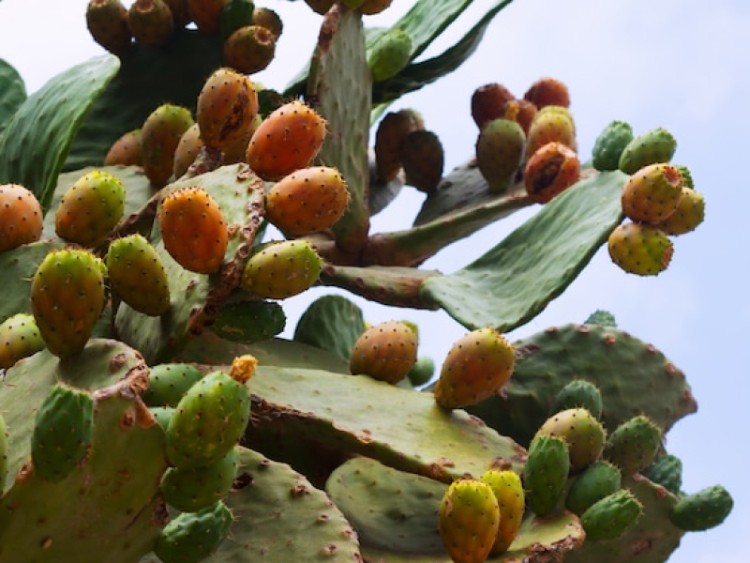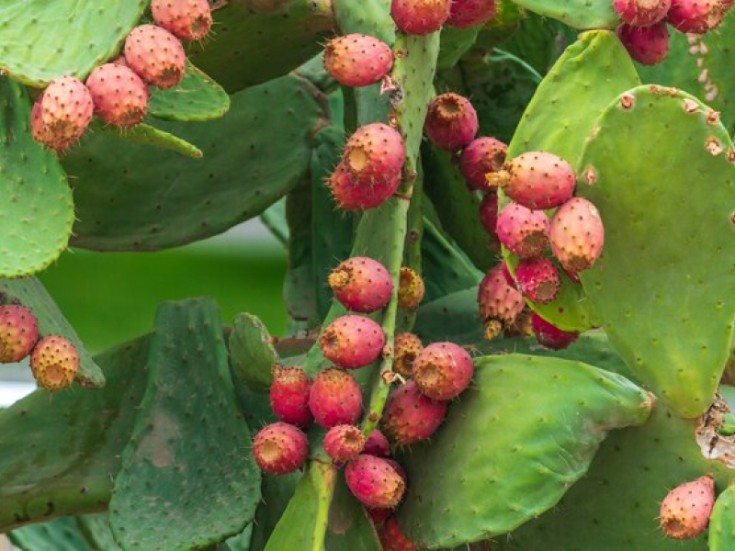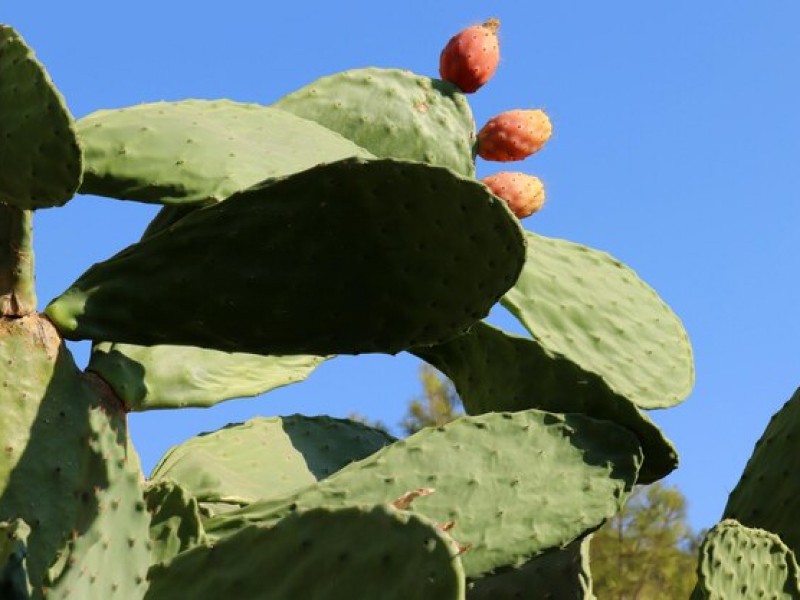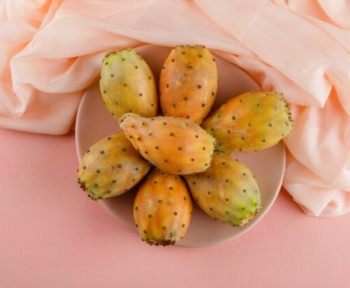Introduction:
If you’ve never tried dried cactus fruit (also known as prickly pear), you might wonder why anyone would want to snack on cactus, right? It sounds out there. But trust me, dried cactus fruit is a delicious, versatile addition to your diet. Not only is it packed with nutrients, but it’s also super easy to use in various meals and snacks. So, whether you’re curious or already hooked, here’s a guide on how to get the most out of this nutritious fruit.
What Is Dried Cactus Fruit?
Dried cactus fruit, or prickly pear, comes from the prickly pear cactus. The fruit is bright, colorful, and fun to look at, with shades ranging from vibrant pinks to yellows and greens. Once it’s dried, it transforms into a chewy, sweet treat perfect for snacking or adding to dishes. And don’t let the name fool you—it doesn’t taste like cactus! It has a mild sweetness with a hint of earthy flavor. Plus, it’s packed with fiber, antioxidants, vitamins, and minerals that are good for you.
So, how does this tiny fruit measure up in terms of nutrition? Pretty darn well, actually. Despite being small, it’s got a lot going on inside, and it’s straightforward to work into your diet. Whether sprinkling it on top of your oatmeal or tossing it into a smoothie, it’s a quick way to boost your nutrient intake.

Why Should You Add Dried Cactus Fruit to Your Diet?
Let me explain if you’re still fending about dried cactus fruit. Adding it to your meals isn’t just about trying something new—it’s about adding some serious nutrients to your diet. Here’s why you should make room for it in your kitchen:
- It’s a Nutrient Powerhouse: Dried cactus fruit is packed with fiber, vitamins, and minerals essential for overall health. You get a dose of vitamin C, magnesium, potassium, and plenty of antioxidants—all crucial for a healthy body.
- Antioxidants Galore: Antioxidants are like little warriors fighting off damage caused by free radicals in your body. They help slow down aging and protect you from diseases. So, eating antioxidant-rich foods like dried cactus fruit is a smart choice for your health.
- Great for Digestion: Let’s talk fiber. This fruit is packed with it, which keeps things moving in your digestive system. Fiber is awesome for gut health and makes you feel fuller longer—perfect for those looking to manage their weight.
Nutritional Breakdown of Dried Cactus Fruit
Now, let’s get into the nitty-gritty details. What’s inside this cactus fruit? A lot of good stuff. Check out the breakdown below to see how nutritious dried cactus fruit is.

Why These Nutrients Matter
- Fiber: You’ve probably heard this a million times, but fiber is essential for digestion. It helps prevent constipation, keeps your gut happy, and helps you feel fuller, especially if you’re trying to control your weight.
- Vitamin C is vital for your immune system, skin health, and tissue repair. It’s one of those all-around superheroes that your body loves.
- Magnesium: Don’t underestimate magnesium—it’s essential for muscle function, energy production, and the nervous system.
- Potassium: Potassium helps keep blood pressure in check, which is necessary for a healthy heart. It also balances fluids in the body, which is why it’s an excellent nutrient for overall health.
How to Add Dried Cactus Fruit to Your Meals
Now that you know why dried cactus fruit is so good for you, let’s discuss how to use it. It’s not just for smoothies (although that’s a great start). Here are some simple ways to add it to your meals and snacks.
Smoothies: A Refreshing Way to Start Your Day
Smoothies are an easy, tasty way to get your nutrition in. Add dried cactus fruit to the mix, and you have a drink packed with vitamins and fiber. Soak the dried fruit in water for 10 minutes to soften it, then toss it in your blender.
Try this simple recipe:
- 1/4 cup dried cactus fruit (soaked in water)
- One banana
- 1/2 cup mixed berries (blueberries or strawberries)
- 1/2 cup almond milk
- Optional: A teaspoon of honey or agave
Blend everything, and you’ve got a smoothie that’s not only healthy but delicious, too.
Salads: Sweet Meets Savory
Want to add some flair to your salad? Dried cactus fruit is the perfect ingredient to sweeten things while keeping it healthy. It adds a chewy texture and sweetness that pairs well with fresh greens.
Here’s an easy recipe:
- A mix of spinach, arugula, and lettuce
- 1/4 cup dried cactus fruit
- A handful of almonds or walnuts
- Crumbled feta or goat cheese
- Light dressing of olive oil and lemon juice
This salad is a crowd-pleaser and an easy way to get extra nutrition.
Snack Time
Sometimes, the best way to enjoy dried cactus fruit is alone. It’s a sweet, chewy, portable snack that you can take to the gym, work, or school. If you want to balance it out, pair it with a handful of almonds or walnuts for a filling snack.
Cactus Fruit Jam: A Sweet Spread
Dried cactus fruit can be turned into jam. Imagine spreading this sweet, tangy goodness on your morning toast or using it as a topping for yogurt. It’s an easy way to elevate your breakfast.
Jam recipe:
- 1 cup dried cactus fruit
- 1/2 cup sugar
- 1/2 cup water
- One tablespoon of lemon juice
Cook all the ingredients over low heat until they thicken, then let them cool. Spread it on your favorite baked goods for a sweet treat.
Baking with Dried Cactus Fruit
Want to add dried cactus fruit to your baked goods? Go ahead! It adds natural sweetness and a fun twist to muffins, cookies, and cakes. Think of it as a healthy substitute for raisins or other dried fruits.
For cactus fruit muffins:
- Add dried cactus fruit to your muffin batter, just like you would with raisins.
- Bake at 350°F (175°C) for 20-25 minutes.
These muffins make for a great breakfast or snack.
Health Benefits of Dried Cactus Fruit
Now, talk about what dried cactus fruit does for your body. It’s not just tasty—it’s packed with benefits that can make a difference in your health.
Rich in Antioxidants
Antioxidants are essential because they protect your body from damage caused by free radicals. These free radicals can lead to chronic diseases and aging. Hence, eating foods with antioxidants is like giving your body extra protection.
Supports Digestion
With its high fiber content, dried cactus fruit is excellent for keeping your digestive system running smoothly. It helps with constipation and bloating and keeps you full longer.
Boosts Immune Health
Vitamin C is crucial for your immune system. It helps you fight off infections and illnesses. Plus, it plays a significant role in collagen production, vital for healthy skin.
Heart Health
Dried cactus fruit contains potassium and magnesium, essential for heart health. They help regulate blood pressure, improve circulation, and keep your heart functioning well.
Promotes Healthy Skin
Cactus fruit is great for skin health because of its antioxidants and Vitamin C. It helps fight oxidative stress and keeps skin looking fresh and youthful.
Interview with a Nutritionist: The Benefits of Dried Cactus Fruit
We spoke to nutritionist Sarah Green about the benefits of dried cactus fruit. She says,
“Dried cactus fruit is an excellent source of fiber and antioxidants. It’s not just a fun addition to your meals—it’s also a nutrient-packed superfood that supports digestion and boosts immunity.”
Conclusion
Incorporating dried cactus fruit into your diet is an easy, tasty way to boost your health. Whether you add it to smoothies, enjoy it as a snack, or bake it into muffins, this fruit brings both flavor and nutrition to the table. Try it out today and enjoy all the benefits this little fruit offers!
FAQs
Dried cactus fruit is the fruit of the prickly pear cactus, dried to make it chewy and sweet. It’s packed with nutrients like fiber, antioxidants, and vitamins.
Yes, it’s high in fiber, which helps improve digestion, prevent constipation, and reduce bloating.
You can find it in health food stores or online. Look for reputable suppliers to ensure quality.
It’s a versatile and nutritious ingredient that can be added to smoothies, salads, baked goods, or eaten as a snack.









